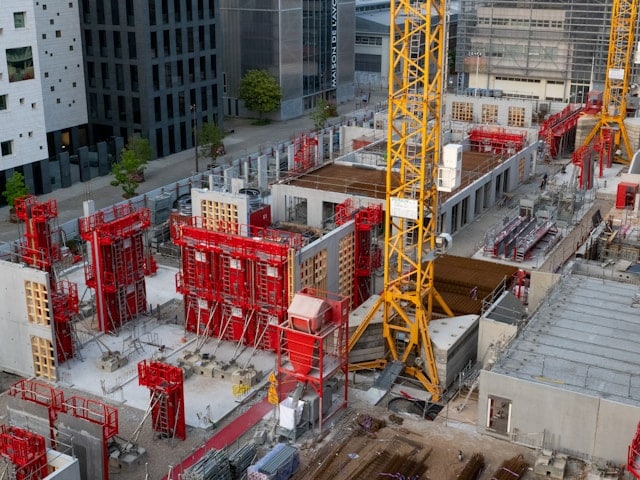How Can Real Estate Investors Navigate the Complexities of Land Assembly Projects?

In the ever-dynamic world of real estate, land assembly has emerged as a lucrative and promising investment strategy for those who dare to venture into it. This process sees multiple parcels of land consolidated into a single tract, which can then be developed into commercial, residential, or industrial properties. However, it’s a complex enterprise, fraught with potential pitfalls and challenges. This article aims to guide you, the investor, through the labyrinth that is land assembly, providing actionable insights and strategies to better navigate this market.
Understanding the Land Assembly Process
Before plunging headlong into land assembly projects, it’s crucial first to understand the intricacies of the process. Land assembly entails the acquisition of separate parcels of real estate to create a larger tract for development. It often involves negotiating with numerous landowners, legal procedures, and liaising with local authorities.
Avez-vous vu cela : What Is the Role of PropTech in Enhancing Tenant Experience in Office Buildings?
The process starts with identifying a suitable area for development and assessing the potential of the properties in question – a stage at which data will be your steadfast ally. Accurate, up-to-date data helps you make informed decisions, taking into account factors such as local market conditions, zoning regulations, and projected future trends.
Next comes the acquisition phase, where negotiation skills are of utmost importance. Each landowner will have different expectations and motivations, so it’s crucial to approach each one with a tailored strategy. It’s also during this phase that legal issues may arise, so having proficient legal counsel to guide you through the process is crucial.
Sujet a lire : What Legal Protections Are Available for Tenants in the UK Facing Unlawful Eviction?
Developing a Business Case for Land Assembly
The success of a land assembly project often hinges on a solid business case. Not only will it help secure financing, but it also serves as a blueprint for the entire project, outlining the anticipated costs, projected returns, and a timeline for the development.
Critical to a robust business case is a thorough market analysis. Understanding the local real estate market, including demand and supply dynamics, potential competitors, and market trends, will help carve out a competitive advantage for your project. Similarly, financial projections are a key component of the business case. They should factor in the costs of acquiring the land, potential development costs, projected rental or sales revenue, and other relevant financial indicators.
It’s also crucial to consider the potential risks associated with the project. These could range from legal issues with land acquisition, changes in market conditions, to unexpected construction costs. A good business case will outline these risks and propose contingency plans to mitigate them.
Leveraging Strategic Partnerships
In the real estate industry, it’s often said that you’re only as good as your network. This rings particularly true for land assembly projects. Forming strategic partnerships with key stakeholders can smooth the path towards successful project completion.
For example, partnerships with local authorities can help expedite the approval process and ensure that the project aligns with community planning objectives. Similarly, collaborations with construction companies, architects, and contractors can help control development costs and ensure that the project is completed on time.
Effective partnerships aren’t limited to industry professionals, though. Building relationships with local residents and community groups can also prove invaluable, helping to mitigate potential resistance to the project and fostering a sense of community involvement.
Navigating Legal and Regulatory Challenges
Of all the challenges that land assembly can throw your way, legal and regulatory hurdles often prove the most daunting. From acquisition contracts to zoning regulations, the legal landscape surrounding land assembly is complex and can be a minefield for the unwary.
Engaging a seasoned real estate attorney early in the process is a wise move. They can help navigate the intricacies of property acquisition, ensuring that all contracts are legally sound and that the rights of all parties are protected.
Staying abreast of local zoning laws is also crucial. These regulations can heavily influence the type and scale of development that can take place on the land, impacting the project’s feasibility and profitability. Understanding these regulations and how they apply to your project will help avoid costly and time-consuming legal disputes further down the line.
Employing Innovative Solutions
In the fast-paced world of real estate, innovation is key. Employing creative solutions can help overcome obstacles and maximize the potential of your land assembly project.
For example, consider alternative financing options. Traditional banks might shy away from the risks associated with land assembly, but other sources, such as private lenders or real estate crowdfunding platforms, might be more amenable.
Similarly, consider innovative design solutions to maximize the land’s potential. This might involve mixed-use developments, which combine residential, commercial, and industrial spaces, or eco-friendly designs, which can attract environmentally conscious tenants and buyers.
In conclusion, while land assembly projects can seem daunting, they also present exciting opportunities for savvy real estate investors. Armed with the right knowledge, partnerships, and innovative solutions, you can successfully navigate the complexities of these projects and achieve impressive returns on your investment.
Strengthening Your Land Portfolio with Land Assembly
When it comes to real estate investments, diversification is the key to minimizing risk and achieving sustained growth. With land assembly, investors can significantly enhance the strength and potential of their land portfolio. This strategy involves consolidating multiple parcels of land into one, thereby creating a larger, more valuable tract for high-demand commercial, residential, or industrial properties.
To successfully implement land assembly into your real estate business, you need to adopt a long-term view and be prepared to navigate an array of complexities. These include dealing with multiple landowners, legal procedures, and local authority regulations. Notwithstanding, the rewards can be well worth the effort.
The first step in developing a successful land assembly is to identify a suitable area for development. Once this is done, you will need to assess the potential of each property using accurate, up-to-date data. This includes analyzing market conditions, understanding zoning regulations, and predicting market trends.
Following this, you’ll embark on the land acquisition phase, which requires negotiation with various landowners. Each owner will have different expectations and motivations, thus necessitating a tailored approach. Engaging a proficient legal counsel during this phase can help you to navigate any legal issues that may arise.
Harnessing Social Media for Land Assembly Projects
In the digital age, social media has emerged as an invaluable tool for various industries, including real estate. When it comes to land assembly projects, social media platforms can be leveraged to gather information, connect with key stakeholders, and even drum up support for your project.
Social media platforms can help you to keep a pulse on the real estate market. By following industry influencers, participating in relevant groups, and keeping up with news, you can gain insights into market trends, new land development opportunities, and potential challenges.
Moreover, social media can also aid in building relationships with stakeholders such as local authorities, fellow investors, and community groups. Through platforms like LinkedIn, you can connect with industry professionals who can offer valuable advice and partnerships. Meanwhile, platforms like Facebook and Twitter can help you to engage with local communities, addressing their concerns, and gaining their support for your project.
Finally, social media can also be a good platform to showcase your land assembly projects. By posting updates and progress reports, you can attract potential investors and tenants, thereby increasing the visibility and viability of your project.
Conclusion
In conclusion, land assembly projects, despite their complexities, offer enormous potential for real estate investors. Understanding the intricacies of land assembly, developing a solid business case, leveraging strategic partnerships, navigating legal and regulatory challenges, and employing innovative solutions are the keys to successful land assembly projects.
While the challenges can be daunting, the rewards can be equally substantial. With the right approach, land assembly can significantly enhance your land portfolio and yield impressive returns on your investment in the long term. Remember, in the world of real estate, persistence and adaptability are as vital as knowledge and strategy. As the landscape continues to evolve, so too must your approach to stay ahead of the game.
